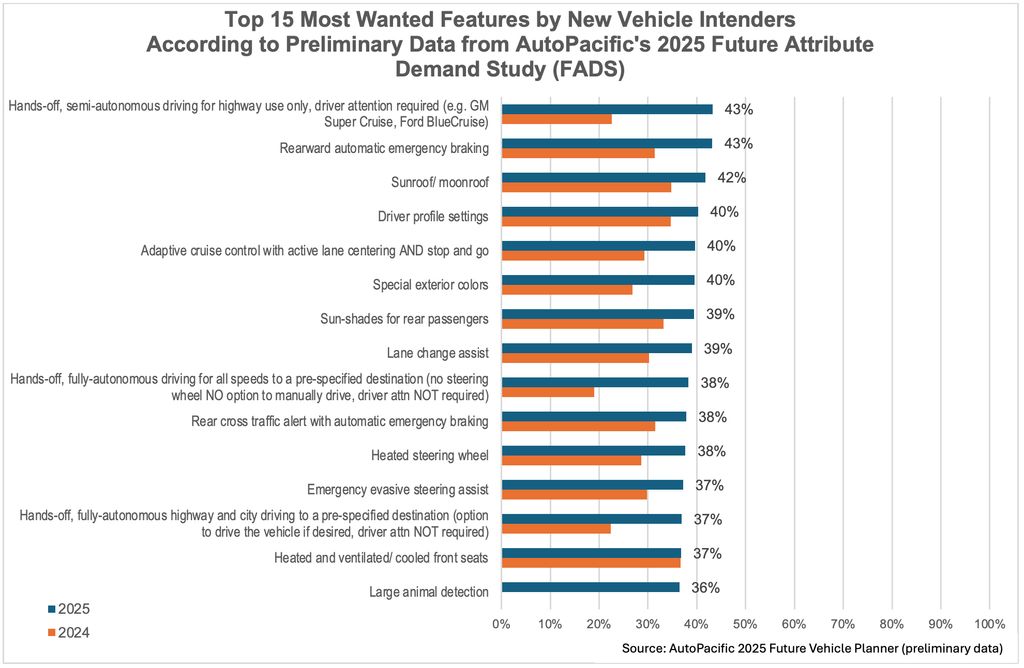
- Way more American car buyers want hands-free driving features in their next car.
- That is now the most in-demand car feature, according to a study from AutoPacific.
- Examples include GM's Super Cruise and Ford BlueCruise.
Americans are increasingly into the idea of letting their cars do the driving.
According to a study from the market research firm AutoPacific out on Thursday, hands-off, eyes-on driver-assistance systems that work on the highway are the No.1 most desired feature among new car buyers. The firm surveyed Americans who plan to buy a new car in the next three years and found that 43% of them want that sort of capability, roughly double last year's results.
Wireless charging pads for smartphones took the top spot in last year's study, suggesting a major shift in the caliber of technology people now want in their cars.

You can think of hands-off, eyes-on systems like cruise control on steroids. Under a driver's watchful eye and on approved highways, they can keep a car planted in its lane, keep up with surrounding traffic and even execute automatic lane changes to pass slower cars. Most adaptive cruise control/lane centering systems require drivers to keep their hands on the wheel, but an increasing number—like GM's Super Cruise and Ford's BlueCruise—invite drivers to go hands-free.
In my experience, the best advanced driver-assistance systems (ADAS) can be a godsend for long and boring highway stints or interminable traffic jams. I never realized how much brain power monotonous highway driving sucks up until I started going hands-free using features like Super Cruise, which tend to leave me feeling far less drained.
It makes sense that as more and more people get exposed to these features in their own cars and through friends, they decide they need it themselves. Super Cruise is now in over 500,000 Chevy, Cadillacs and GMC vehicles, GM said this week. That's AutoPacific's takeaway, too.
"AutoPacific’s research has shown that autonomous driving and ADAS features have struggled to capture strong demand from new vehicle intenders over the past couple of years primarily due to unproven technology and lack of consumer comfort with their vehicle having control over situations," the firm said in a statement. "It seems the tune has shifted as some technologies become more prominent in new vehicles and consumers gain experience and confidence in them."

As compared with last year, consumers are generally more comfortable handing over some or all control to their cars, AutoPacific found. In part, that's also because this year's survey respondents skewed slightly younger (at 39 years old), and younger buyers are more tech-savvy. Today, 48% of buyers want their car to drive itself so they can do other things in the car. That's up 10 percentage points from last year.
Several other ADAS features shot up in popularity this year and made the top 15 most in-demand features, including rearward automatic emergency braking (tied for first place) and fully autonomous highway and city driving.
No matter how much people may want it—you know I do too—hands-off, eyes-off capability is basically nonexistent in consumer cars. There's no car you can buy today that will take you anywhere while you read a book or take a nap.
The closest system to that is Mercedes-Benz Drive Pilot. A step above Super Cruise and its ilk, Drive Pilot doesn't require a driver's attention to function. But it only works in the best weather conditions, at low speeds and on highways in California and Nevada.
Contact the author: Tim.Levin@InsideEVs.com







